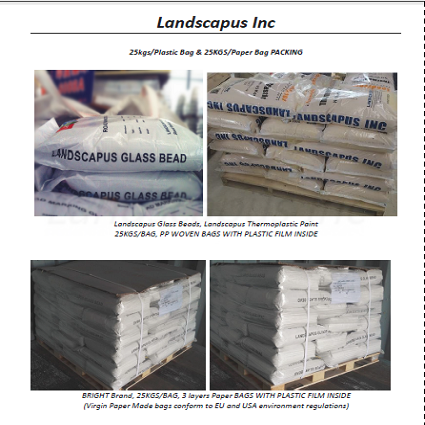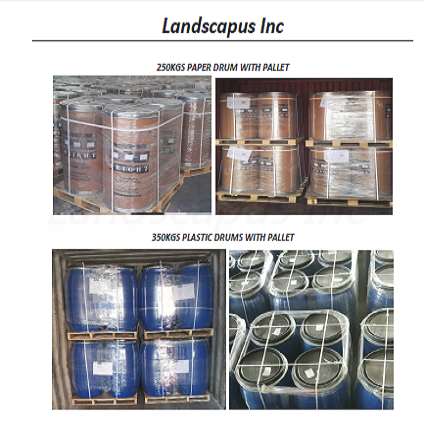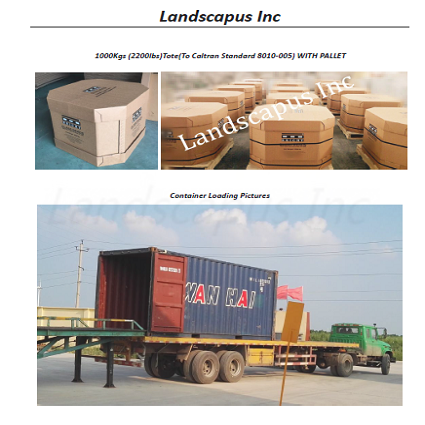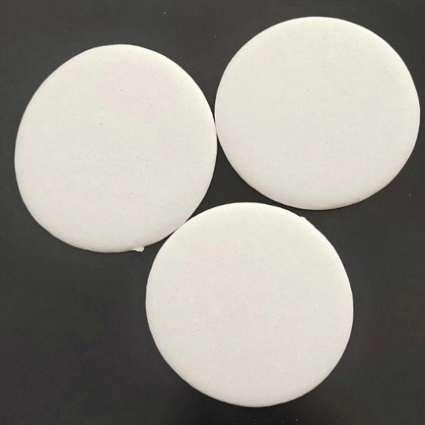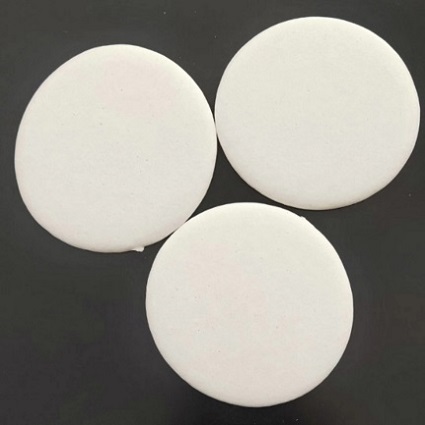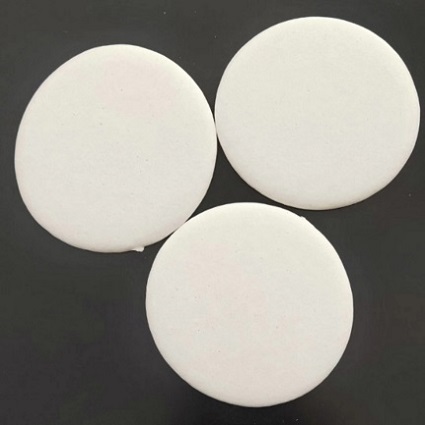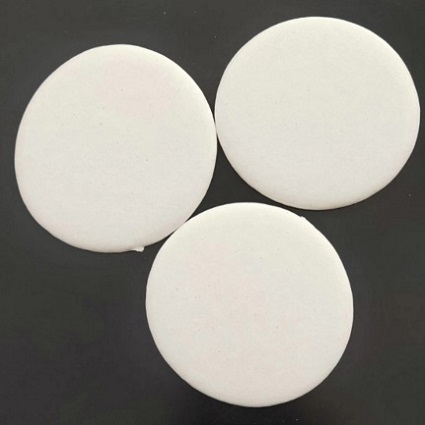Thermoplastic ROAD MARKING PAINTS
EN 1871:2000 / AASHTO M249
TECHNICAL DATA SHEET (TDS)
WHITE & YELLOW
General
This specification / requirements is covering the purchase of reflective Thermoplastic paint for road marking for white and yellow color lines and horizontal traffic signs.
Material
The materials shall comply with the EN 1871:2000 standard – Road marking materials physical properties.
Technical Characteristics
|
Characteristic, Relative Paragraph of ΕΝ 1871: |
White |
Yellow |
|
Chromatic coordinates - 4.2.1.1 |
Table 2-White |
Table 2-Yellow |
|
Class of luminance Factor β, 4.2.2.1 -Table 5 |
LF4(β≥0,70) |
LF1(β≥0,40) |
|
Softening Point,4.2.1.2 - Table 6 |
SP3((≥95°C) |
SP3((≥95°C) |
|
Cold Impact,4.2.1.4 - Table 7 |
Cl2 |
Cl2 |
|
UV Aging,4.2.1.5-Luminance Factor-Table 3 |
UV1((Δβ≤0,05) |
UV1((Δβ≤0,05) |
|
UV Aging,4.2.1.5-Chromaticity Coordinates-Table 2 |
Table 2-White |
Table 2-Yellow |
|
Heat Stability,4.2.3.1- Chromaticity Coordinates - Table 2 |
Table 2-White |
Table 2-Yellow |
|
Heat Stability,4.2.3.2 - Softening Point |
ΔSP≤±10°C |
ΔSP≤±10°C |
|
Weather Resistant,4.2.2.4 - Table 9 |
TW2( 2,5 – 5,0) |
TW2( 2,5 – 5,0) |
|
Weather Resistant(after UV aging) 4.2.3.6 - Table 10 |
TWU1(0 to 0.5) |
TWU1(0 to 0.5) |
Additional to the above requirements the offered Thermoplastic paint shall appear the below properties / performance, in use that are designated in EN 1436:2007 +A1 Road Marking Materials – Road Marking Performance for road Users:
|
Characteristic, Relative Paragraph of ΕΝ 1436: |
White |
Yellow |
|
Luminance coefficient under diffuse illumination in dry conditions 4.2.2 Table 1 |
Q3 (Qd≥130) |
Q2(Qd≥100) |
|
Retroreflection under vehicle headlamp illumination, Dry road Markings, 4.3, Table 3 |
R4(RL≥200) |
R3(RL≥150) |
|
Chromatic coordinates, 4.4, Table 6. |
Table 6-White |
Table 6-Yellow class Y1 |
|
Skid Resistance.4.5, Table 7 |
S2(SRT≥45) |
S2(SRT≥45) |
Composition of the Thermoplastic paint
The pigment, the glass bead the filler shall be uniformly spread in the resin and complies to the below Table:-
|
Composition of the Thermoplastic paint % per mass |
|||
|
Component |
White |
Yellow |
Red |
|
Binder |
18.0 min |
18.0 min |
18.0 min |
|
Glass Beads – According the ΕΝ 1424:1997/A1:2003 |
30-40 |
30-40 |
30-40 |
|
Calcium Carbonate and inert Fillers |
42 max |
42 max |
42 max |
|
Titanium Dioxide – According to ASTM D476 Type II(Rutile) |
10.0 min |
------------- |
-------------- |
The granulometry of the Glass Beads that are spread in the Thermoplastic paints shall be as per below Table:
|
Sieves ISO 565:1990 R 40/3 - μm |
Cumulative retained mass (%) |
|
710 |
0-2 |
|
600 |
0-10 |
|
355 |
30-70 |
|
212 |
70-100 |
|
125 |
95-100 |
SPRAY
The principle of spray is - hot material, stored in a mechanically agitated and thermostatically heated vessel, is sprayed under pressure through a nozzle onto the road surface. The height and pressure of the nozzle control the width of the line, while the pressure at the nozzle and the application speed controls the thickness of the line. Specially constructed spray equipment can travel and apply thermoplastic lines at a faster speed than extrusion. Sprayed applied markings are ideally suited for overlaying partially worn extrusion lines. Spray thermoplastic provides a low cost alternative to extrusion where an improvement is required in terms of the performance characteristics of a line, without an excessive increase in the thickness of the line.
This enables good atomisation at temperatures lower than that at which serious degradation will occur. The application to road surface is achieved by air-atomised spray.Spray plastic product consists of a mixture of light coloured aggregates, pigment and extender bound together with a thermoplastic binder system.
The exact composition of a Spray plastic grade will depend on the specification requirements, and is designed that when in a molten state, it can be sprayed readily onto the road surface to give an even line of good definition.Immediately following application of the line, a surface application of solid Glass Beads to IS EN 1423 or equivalent shall be applied at a typical rate of 450 g/m2 by an applicator gun attached to the spray Machine.Lines are tack free within 1 minute at an ambient air temperature of 15°C.
This process employs a mechanically propelled vehicle. Spray thermoplastic is applied to the road by air spray under pressure through one or more oil jacketed spray plastic guns. The marking is completed by a pressurised surface application of solid Glass Beads. For more details refer to our Thermoplastic Spray Line Method Statement.
Recommended Thickness 1.0 – 2.5 mm.
Immediate retro reflectivity
Low maintenance costs – single application of sprayed thermoplastic material immediately restores the Luminance & Retroreflectivity of a road marking.
High output application volumes.
Application Temp °C 180 – 210

